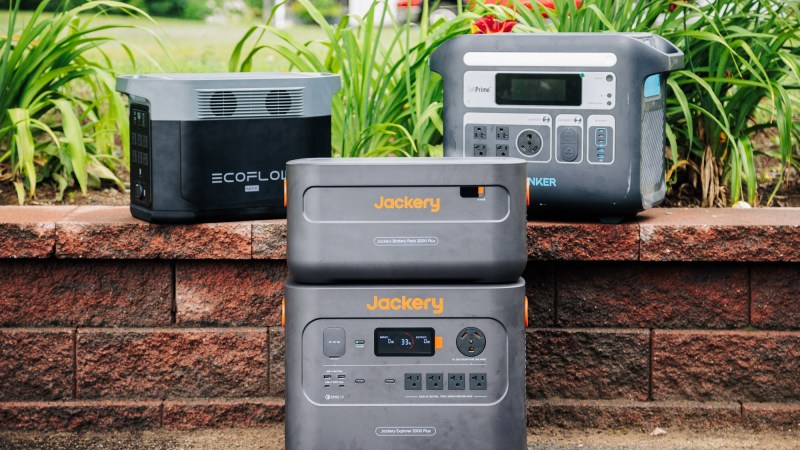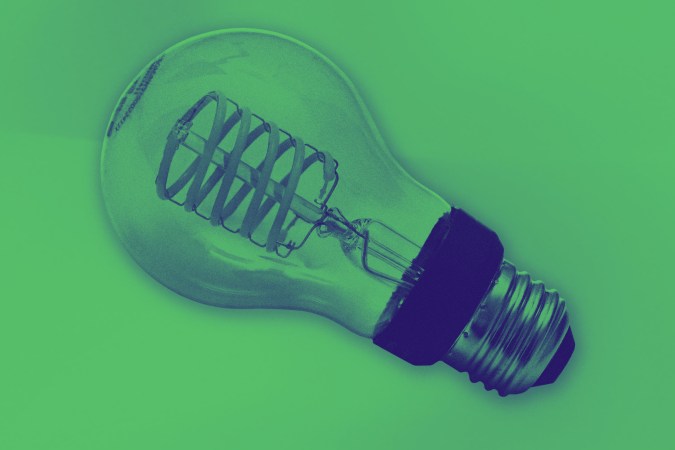

This story originally featured on Hothouse. Subscribe to the climate newsletter on Substack.
Renewable energies have long been criticized for their variability. From brewing your morning coffee or tea to binging Netflix at night, demands for residential power tax the grid most in the mornings and evenings. Meanwhile, renewable wind power peaks in the middle of the night, while solar peaks during the brightest hours of the day.
Powering the legacy grid with gas or oil is relatively straightforward — you get out what you put in. One gallon of gas in is one gallon of gasoline consumed. As we transition to a green grid, the energy industry finds itself in the position of having to solve for these discrete breakdowns and inherent mismatches between human behavior and renewable generation.
One promising solution is emerging in the U.K.
The London-based Octopus Energy is an energy company built around the insight that, by finding a way to shift more residential energy demands to those off-peak hours, we can simultaneously lighten the burden on the grid and reduce energy costs for consumers.
Take electric cars. If everyone driving electric vehicles plugged their cars in when they return from their 9-to-5, expecting an instantaneous charge, the surge in demand could overwhelm the grid, triggering a meltdown.
In the U.K., Octopus Energy runs an application called “Intelligent Octopus for EV”, which uses algorithms to both stagger the charging of electric vehicles overnight, ensuring the grid’s need never outstrips its supply, and to time the charging of each vehicle to when renewable energy is most abundant and cheap on the grid.
When an electric vehicle owner returns home, she simply inputs when she plans to take her car out the next day into the Intelligent Octopus app.
Following the sun’s cycle of heating and cooling the atmosphere, wind is most abundant at night. The charging algorithm takes advantage of this. In the early morning hours, the algorithm kicks in, and sweet renewable electrons surge into electric cars under the Intelligent Octopus app’s orchestration.
Today, Intelligent Octopus regulates power supply to 150,000 electric vehicles in the U.K. For now, only customers of utility providers licensing a software platform called Kraken Technologies have access to the application.
Kraken is on a mission to make every tentacle of the energy system as efficient as possible.
Through a mix of software automations, behavioral nudges, and optimized hardware, Kraken pushes people to use energy when renewable electrons are most abundant, and therefore cheapest, on the grid. By tackling this challenge from every angle, Kraken has built a business model out of bridging the gap inherent between the variabilities of renewable energies and human behavior.
A full tech stack for the energy industry
Initially, the Kraken software was conceived to disrupt the payments and billing side of utility companies. Coming from a background in consumer-oriented enterprise software, Octopus Energy CEO Greg Jackson says he and his cofounders saw energy as an antiquated industry where software could add value.
It’s not that traditional utilities don’t run software — they do. It’s that their software is often piecemeal, says Jackson. Utilities typically run numerous layers of disjointed software, with one operating billing, another payments, and a handful more managing communications and energy consumption data. A change to one software could necessitate a change to every other, which is exactly what it sounds like — a house of cards.
Kraken set out to bundle these services. Similar to the way Substack markets itself as a full tech stack for running an independent media business, Kraken imagined itself as a full tech stack for running an energy company.
The platform was designed to be a seamless user experience for consumers and utility providers alike. For the first time, a utility representative could actually access and control all aspects of a household’s account, from billing to payments to meter readings, in one place, making the passing of frustrated customers from one department to another a thing of the past.
It was this centralization of data and operations that would ultimately enable a platform even more powerful than the team originally anticipated.
Kraken has, in effect, introduced an operating system to the energy system.
In the same way that the iPhone’s iOS operating system laid the foundation for the development of endlessly proliferating smartphone applications, Kraken offers an operating system through which software developers, energy retailers, and consumers can collaborate to develop and deploy different applications to solve discrete energy constraints as they arise.
“When the iPhone was launched, it came with iOS, the operating system and 8 built-in apps. An email app, a text app, and a couple of others,” says Jackson. “At the time, it wasn’t obvious that that underlying operating system that enabled an initial few apps to work would develop to the point that you’d have this flourishing development of capability through new apps. Everything from the revolution of transport through Uber to the QR codes, and everything else, all enabled by the fact you’d moved to an operating system, and a few bits of tech on the phone itself, that were fundamentally different than we’d had before. That’s what we can do with energy.”
The Intelligent Octopus program coordinating the charging of electric vehicles is just one example of multiple applications running on top of Kraken optimizing energy efficiency so far.
Overcoming the old guard
Kraken’s software now operates in around 10 countries, and its codebase is updated and released 150 times a day. But the road to get here hasn’t been an easy one: marketing Kraken Technologies as a full stack tech platform for energy and utilities management turned out to be a harder sell than anticipated.
“We had the insight that you could build software platforms in the 21st century that brought this cheaper, greener power to life faster,” Jackson says. “But when we spoke to energy companies, they’re typically very conservative.”
Most energy companies are well over a century old. The result? Many still do business like it’s 1910. They’re risk averse. The idea of paying for such a comprehensive external software service was so foreign to many traditional utility companies, the creators of Kraken struggled to find a first customer.
So Kraken decided to build a first customer of its own: Octopus Energy.
The London-based Octopus Energy launched to the public in April 2016. In the early days, Kraken’s tech team sat with Octopus’s customer service team, listening in on calls to identify pain points in the internal workflow and the customer experience. Through this hands-on research, the Kraken team slowly unearthed inefficiencies that bits of new software or user interfaces could solve — the kinds of insights that could only be gleaned from the inside.
Kraken’s design improved incrementally, expanding in capacity and technical capability. In time, Kraken has morphed into a fully-fledged dynamic software platform capable of managing an energy system’s entire value chain.
By streamlining operations and optimizing energy consumption across the board, Octopus Energy is able to sell cheaper clean electricity than its traditional utility counterparts.
That demo client — Octopus Energy — has been so successful, it recently eclipsed all but one of the U.K.’s major energy providers to become the second-largest energy company in the country. Octopus Energy now directly services 18 percent of the U.K. retail energy market directly. If you count U.K. homes that get their energy from other utility companies running Kraken, the market share goes up to 40 percent.
An unprecedented rate of innovation
Since 2016, Octopus Energy has been ground zero for building and testing apps on top of the Kraken software platform. Once tested and proven, these apps can be used by all utility companies licensing the Kraken software, regardless of location.
“It’s the same platform, whether you’re in Australia, Tokyo, London, or Munich,” Jackson told The Telegraph. “What that means is, when you learn more about how to optimize charging a car battery in Houston, the same optimization is instantly available around the world.”
Kraken’s streamlined software grants energy companies an unprecedented agility: Programs can even be spun up in a pinch in response to a crisis. Such a short cycle of innovation is unheard of in the energy industry.
This last winter, for example, in just a matter of weeks, Kraken was able to design and launch a program in response to the energy supply crunch in the U.K. Forty percent of households serviced by Kraken in the U.K. opted into the program. Customers who volunteer to lighten the load on the energy grid through easy behavioral changes, like running the dishwasher later in the evening instead of immediately after dinner, are rewarded.
“In the U.K., when electricity is in quite short supply, the national grid will turn on the most expensive and filthy diesel generators to maintain supply,” says Jackson. “And instead of doing that, what we’ve pioneered is paying customers to move their consumption away from the period when the diesel would have been used. Instead of giving the money to the diesel polluters, we give it to the consumers.”
Jackson says this consumer choice of 600,000 participating households — 40 percent of Octopus’ U.K. retail customers — had the equivalent reduction in energy consumption as turning off all the lights in two of the U.K.’s largest cities.
Building out the customer-centricity of Kraken was critical in unlocking the capacity to promote these kinds of behavioral changes. Meanwhile, the element of Kraken as an “iOS” on top of the energy system is what enabled the rapid prototyping and testing of potential ideas to identify the messaging and incentives that would actually resonate with consumers to develop new energy consumption habits.
Instead of money, for instance, Octopus gave customers reward points, offering bonuses and multipliers for winning streaks. Prizes go to customers who score within the top five percent.
The tactics are not unlike that of Duolingo, an app that has perfected the behavioral nudge to get people hooked on language learning. Across the energy industry, perfecting and scaling these kinds of behavioral nudges will be key to addressing renewable energy’s variability systemwide.
“If you go to the supermarket, you’ll see hundreds of different ways of influencing our purchasing decisions,” says Jackson. “And yet, too often, I’ll read a really well-researched paper in energy that says we tried this program one way [and it didn’t work]. We need to move into the world where we can do so much more.”
Zero-bill homes
Another app spun up and deployed on Kraken in short order last year is Octopus Zero.
“In a lot of parts of the United States, consumers and, indeed, in lots of parts of Europe, consumers don’t get paid for excess solar electricity generated on their property when it goes on the grid,” says Jackson. “And that’s complete madness, because, essentially we’re asking people to make an investment that benefits the system, and yet they carry the cost and no benefit.”
With Octopus Zero, Kraken set out to flip that dynamic on its head, rewarding homeowners who adopt electric appliances with quite literal ‘zero-bill homes’ — zero utility bill, zero electricity bill.
Octopus Zero created an algorithmic model that spits out electric appliance recommendations perfectly suited to the size and dimension of a home by combing billions of historic data points of home electric appliances. The end result is home outfitted for optimal energy efficiency and consumption. From there, Kraken’s proprietary software optimizes each appliance’s energy consumption over time.
“If a house builder gives us the footprint, the design of a house, we can say how much solar paneling, what size heat pump, what size battery, what kind of hot water heater it needs. And then we’ll optimize all of that [through its connection to the grid], and we’re confident enough in the data that we’ve done, that we’ll underwrite it. And you’ll never get an energy bill for a decade.”
The ‘zero-bills home’ program began with just two houses last September. Now, Jackson, they have 100 additional homes signed up and thousands more in the pipeline.
In Octopus Energy’s dogged pursuit of end-to-end efficiency, the energy company has even started sticking its tentacles into optimizing electric hardware directly.
For instance, when Octopus couldn’t find heat pumps capable of talking to the Kraken software in the way they wanted, Octopus mocked up their own ‘intelligent’ heat pumps to maximize efficiency. Jackson says prototypes are currently in the market and a retail product is expected to go into production within the year.
“The best tech businesses in the world do this. If you look at Amazon, Amazon operates ships, right? I remember when Amazon was an online book store. It now operates ships, and planes. If you want to change the world quickly for the better, and you’ve got technology at the core, you often have to change everything around it, and that’s what we’ll do,” says Jackson. “The key thing here is understanding a bit like a Tesla wasn’t just a car with, you know, some batteries and motors. It was a rethink of the car.”
Not a clean slate, but the next best thing
While the energy transition presents discrete challenges to be solved, it presents discrete opportunities, too.
Jackson emphasizes that trying to make the renewable energy system behave like the fossil fuel system is not only impractical, it also shortchanges us the benefits of renewables not yet imagined.
“One of the lights that came on for me is that, when you worry about the periods when generation is low, you forget just how incredible the opportunities are [the] times [when] generation is high,” says Jackson.
Take urban agriculture. From powerful UV lights driving growth, to running intricate sprinkler systems and powerful air purifiers, over half of an indoor farm’s operating expenses can be attributed to energy consumption. Reduce energy costs and dramatically impact the bottom line.
“We’ve got 14 indoor farms on our customer books who have taught the crops to sleep when energy prices are high, and to grow with light and heat when energy prices are low,” says Jackson. “If we try to make renewables behave like fossil fuels, like by flattening out the curve with [battery] storage, those farms would all be paying more for electricity all the time and we’d be missing out on cheap, locally grown, super healthy food.”
Jackson says we should be identifying opportunities like this where we can capitalize on the fundamentals of renewables.
In an ideal world, Jackson says, we would reimagine and rebuild the energy system entirely from scratch. He points out that we know we didn’t get the energy system right the first time around with our dependence on fossil fuels.
“If we could all start with a clean sheet of paper, it would be easier,” says Jackson. “[But] stop thinking about what we’ve currently got, because it’s probably largely wrong, right? … Imagine we never had fossil fuels. What world would brilliant and genius humans have built? That’s the world we now need to get to.”























